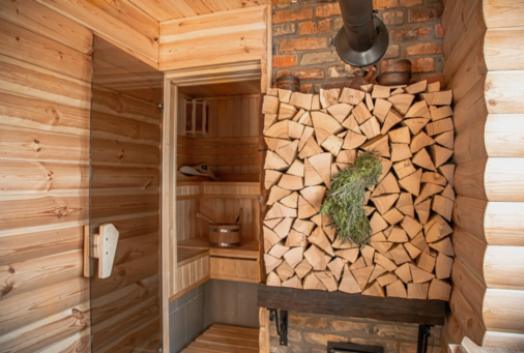Wood-burning saunas offer a traditional and authentic sauna experience, but they also come with their own set of safety concerns. Proper selection of wood, installation techniques, ventilation, temperature and humidity levels, maintenance of sauna stove, fire safety measures, carbon monoxide awareness, and safe guidelines for users are all essential aspects to consider. In this article, we will discuss the essential safety tips for wood-burning saunas to ensure a safe and enjoyable sauna experience for all.

When it comes to selecting the right wood for your sauna, it is important to choose a type of wood that is safe to use in high heat environments. Some popular options for sauna wood include cedar, hemlock, and aspen. These types of wood are known for their ability to withstand high temperatures and resist warping or cracking. Additionally, these woods have a pleasant aroma that can enhance the sauna experience. When selecting wood for your sauna, be sure to choose a dry, seasoned wood that is free of knots and other imperfections that could cause the wood to burn unevenly or release harmful fumes. By selecting the right wood for your sauna, you can enjoy a safe and relaxing sauna experience.
Proper installation and ventilation techniques are crucial when it comes to ensuring the safety of a wood-burning sauna. Improper installation can lead to fire hazards and poor ventilation can result in a buildup of dangerous gases like carbon monoxide. It is important to consult with a professional when installing a wood-burning sauna to ensure that it is done correctly and meets all safety regulations. Additionally, proper ventilation is necessary to ensure that the sauna is able to effectively expel any smoke or gases that may be produced during use. By paying close attention to installation and ventilation, you can enjoy the benefits of your wood-burning sauna safely and comfortably.
Maintaining safe temperatures and humidity levels in a wood-burning sauna is crucial for the safety and comfort of users. It is important to regularly monitor the temperature inside the sauna to ensure it does not exceed safe levels. Additionally, controlling the humidity levels is essential to prevent the risk of mold growth and maintain a comfortable environment for sauna users. By properly regulating these factors, individuals can enjoy the benefits of their wood-burning sauna while ensuring a safe and enjoyable experience.
Regular maintenance and inspection of the sauna stove is crucial in ensuring the safety and functionality of your wood-burning sauna. It is important to regularly check for any signs of wear and tear, such as cracks or rust, and to promptly address any issues that may arise. Additionally, it is recommended to clean the stove regularly to remove any built-up ash or debris, as this can impact the stove's efficiency and potentially pose a fire hazard. By staying diligent in maintaining and inspecting your sauna stove, you can enjoy a safe and comfortable sauna experience for years to come.
When it comes to operating a wood-burning sauna, fire safety is of utmost importance. To ensure the safety of both yourself and your property, it is crucial to implement proper fire safety measures and have the appropriate equipment in place.
One essential fire safety measure for wood-burning saunas is to always keep a fire extinguisher nearby. In the event of a fire, having a fire extinguisher readily accessible can help to quickly extinguish small fires before they have the chance to spread and cause further damage.
Additionally, it is important to regularly inspect and maintain the sauna stove to ensure that it is functioning properly and free of any defects that could potentially lead to a fire. This includes checking for any signs of wear and tear, cleaning out any built-up debris or ash, and ensuring that all components are in good working condition.
Another important fire safety measure is to never leave the sauna unattended while the stove is burning. It is crucial to always supervise the sauna while it is in use and to never leave it running overnight or for extended periods of time without supervision.
In the event of a fire emergency, it is important to have a clear evacuation plan in place. This includes knowing the location of all exits, ensuring that they are easily accessible and unobstructed, and having a designated meeting spot outside where everyone can gather in the event of an emergency.
By implementing these fire safety measures and having the appropriate equipment in place, you can ensure the safe operation of your wood-burning sauna and significantly reduce the risk of fire-related incidents.
When using a wood-burning sauna, it is important to be aware of the dangers of carbon monoxide buildup. Carbon monoxide is a colorless, odorless gas that can be deadly if inhaled in high concentrations. To prevent carbon monoxide poisoning, it is essential to ensure proper ventilation in your sauna and to never operate your sauna stove without adequate airflow. Additionally, it is important to install a carbon monoxide detector in or near your sauna to alert you to dangerous levels of the gas. Regular maintenance and inspection of your sauna stove can also help prevent carbon monoxide buildup. By staying informed and taking precautions, you can enjoy your wood-burning sauna safely.
When using a wood-burning sauna, it is important for users to follow safe use guidelines to ensure a pleasant and hazard-free experience. By adhering to these guidelines, sauna users can enjoy the benefits of their sauna while minimizing the risk of accidents or injuries.
